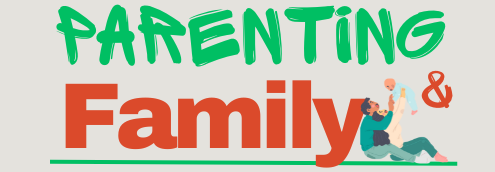
Let’s take a minute. I want you to think about the last time your household felt truly overwhelmed by big feelings. Maybe it was a tantrum over a lost toy that seemed to shake the whole house. Maybe it was a slammed door after a disagreement with your teen. Or maybe it was a quieter, heavier feeling—a sense of walking on eggshells because everyone’s emotions were just under the surface.
We often dismiss these moments as just… a family matter. Something to get through. Something that’s just part of the messy, beautiful chaos of raising a family.
But what if these moments aren’t just obstacles to survive? What if they are the very opportunities we’ve been looking for? Opportunities to teach our children the most important skills they’ll ever learn: how to understand their emotions, build resilience, and connect deeply with others.

As a mom of three and a parenting blogger for over a decade, I’ve seen firsthand how shifting our perspective on family emotional health can change everything. It’s not about avoiding the hard stuff. It’s about navigating it together in a way that strengthens your bonds instead of straining them.
What Do We Mean by “A Family Matter”?
When we say something is a family matter, we often mean it’s private, internal, something to be handled within the home. But sometimes, we use this phrase to minimize what’s really happening. We might be dealing with a significant challenging family issue—like ongoing sibling rivalry, persistent anxiety, or big feelings about a move or divorce—and try to shrug it off as “just a phase.”
The truth is, any family matter that involves big, complex emotions is a chance for growth. It’s a signal that our children (and maybe we ourselves) need better tools for handling family issues with empathy and understanding.
The Signs: Is Your Family Navigating More Than Just a Rough Patch?

How can you tell if a family situation is a typical bump in the road or a sign that your family’s emotional toolkit needs a few new tools? Ask yourself these questions:

- Are small sparks causing big explosions? Does a minor frustration, like spilt milk or a missing shoe, regularly lead to a major meltdown for your child—or for you?
- Do you feel like you’re constantly managing reactions instead of understanding causes? Are you just putting out fires without getting to the root of the emotion?
- Is there a pattern of misunderstanding? Do you often find yourself thinking, “Why are you so upset about that?” or does your child feel like you just don’t “get it”?
- Does conflict usually end with someone in tears or slamming a door, rather than with a sense of resolution?
- Do you avoid certain topics because you’re afraid of triggering a big emotional response?
If you nodded along, please know you are not alone. This is the reality for so many loving, well-intentioned families. The good news is that you can transform these challenging moments.
Our E-book
From Reaction to Connection: The Power of Mindsight
For years, I thought my job was to stop the big emotions. To calm the storm, to fix the problem, to make the tears go away. But I was missing the point. I was treating the emotion as the problem, rather than seeing it as a message.
The real shift happened when I learned about the concept of mindsight—a term coined by Dr. Dan Siegel that essentially means our ability to see and understand our own mind and the minds of others. It’s the foundation of emotional intelligence in children.
Mindsight is what allows us to:
- Pause before reacting in anger.
- Say, “I see you’re really frustrated right now,” instead of “Stop crying!”
- Understand that a child’s “bad behavior” is often a sign of an unmet need or a big feeling they can’t manage.
- Turn a tantrum into a teachable moment about naming emotions.
I remember one afternoon, my middle child was having a complete meltdown because his block tower fell. My old instinct was to say, “It’s okay, we can build another one!” and hurry him through his disappointment. But this time, I took a breath and tried a mindsight approach. I sat down next to him and said, “You worked so hard on that tower. It’s really frustrating when something you build falls down. That makes sense to feel sad and angry.”
The change was instant. The screaming lessened. He looked at me, tears in his eyes, and nodded. I had seen him. I had validated his emotion instead of trying to erase it. That moment of connection was more powerful than any quick fix. It was a small but profound family bonding experience built on empathy.
This is the heart of what I explore in my new ebook, The Power of Mindsight: Helping Children Understand Emotions, Build Resilience & Connect.
It’s a practical guide filled with strategies to help you make this shift from reactive to connective parenting.
Building Your Family’s Emotional Blueprint: Practical Steps
Fostering emotional resilience in your family doesn’t require a degree in psychology. It starts with small, consistent practices.
1. Name It to Tame It.
This is the golden rule. Help your children build an emotional vocabulary. Instead of “I’m mad!”, encourage “I feel frustrated, jealous, disappointed.” When you model this yourself—“Wow, I’m feeling really impatient in this traffic jam”—you teach them that all feelings are acceptable.
2. Connect Before You Correct.
In the middle of a meltdown, logic doesn’t work. The brain is flooded with emotion. First, connect with the feeling. A hug, a gentle touch, or a simple “I’m here with you” calms the nervous system. Once the storm passes, you can talk about the behavior.
3. Turn Conflict into a Learning Lab.
Sibling arguing? Instead of just playing referee, guide them through it. “I see two kids who both want the same thing. How can we solve this so it’s fair for everyone?” This teaches problem-solving in families and empathy.
4. Create Meaningful Rituals.
Rituals are the bedrock of family emotional health. Whether it’s a special handshake, “high-low” at dinner, or a weekly game night, these positive interactions build a bank of trust and joy that you can draw on during harder times.
5. Be a Mirror, Not a Critic.
Your reaction to your child’s emotions teaches them how to feel about their own feelings. If you meet their anxiety with calm, their anger with understanding, and their sadness with comfort, you mirror back that their emotional world is safe and manageable.
You Are Building More Than a Family—You’re Building Emotional Resilience
The day-to-day family matters—the squabbles, the frustrations, the big feelings—are not distractions from your family life. They are your family life. They are the raw materials for raising emotionally intelligent, resilient, and connected human beings.
This journey isn’t about being a perfect parent. It’s about being a present one. It’s about giving your children the lifelong gift of understanding themselves and others.
If you’re ready to move from feeling overwhelmed by emotions to using them as a tool for connection, I’ve created a resource just for you. The Power of Mindsight is a step-by-step guide that breaks down these concepts into 10 manageable chapters. You’ll find real-life stories, actionable scripts, and practical strategies to help you foster mindsight skills at every age. It’s designed for busy parents who want to make a lasting difference, one emotional moment at a time.
You have the power to transform your home into a place where every family matter, big or small, becomes an opportunity for growth and love.
What’s one emotion your child is currently struggling with? Share in the comments below—let’s support each other with empathy and ideas.





